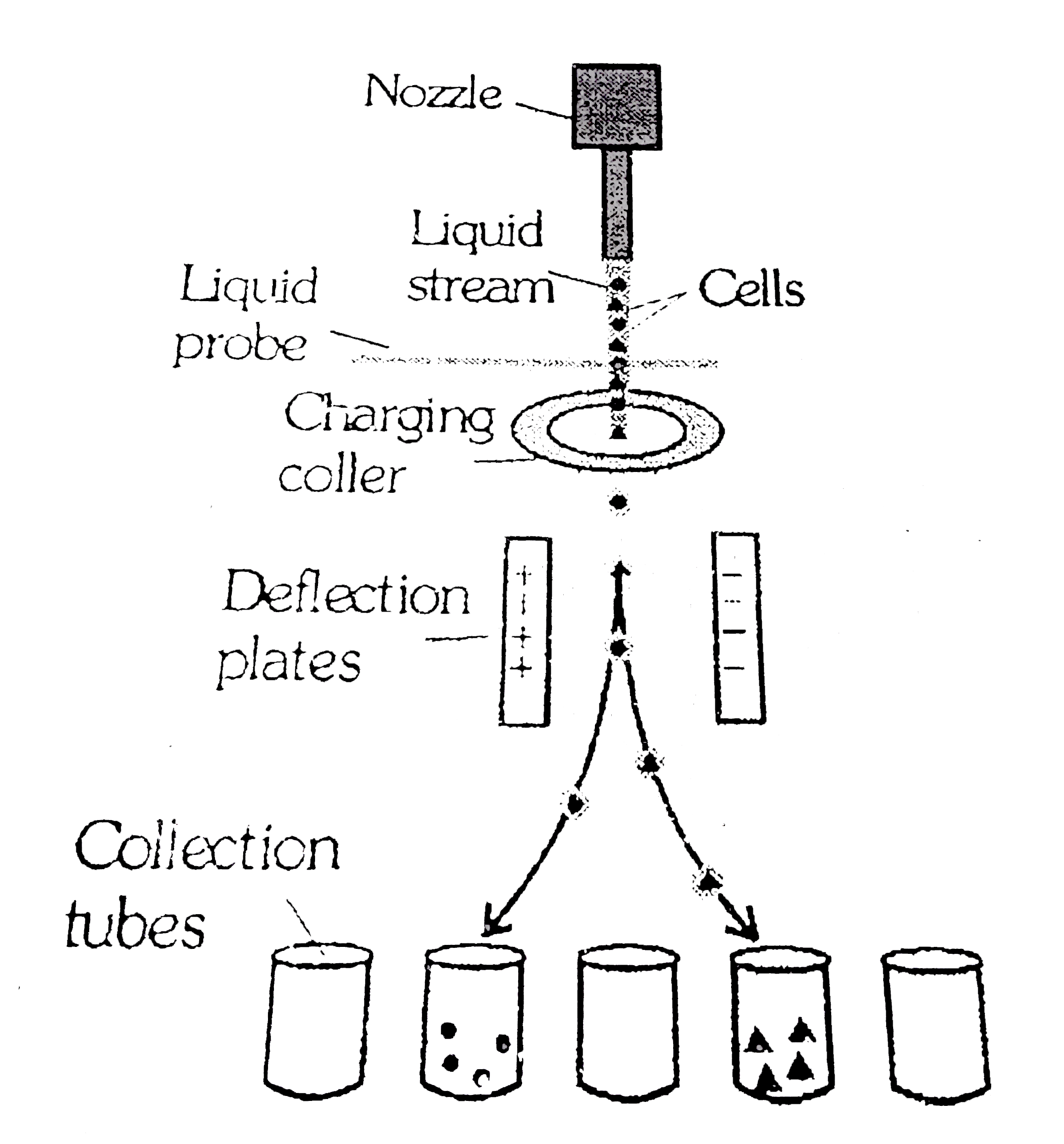Flow cytometry, illustrated in the figure, is a technique used to sort cells by type. The cells are placed in a conducting saline solution which is then forced from a nozzle. The stream breaks up into small droplets, each containing one cell. A metal collar surrounds the stream right at the point where the droplets seprate from the stream. Charging the collar polarizes the conducting liquid, causing the droplets to become charged as they break off from the steam. A leser beam probes the solution just upstream from the charging collar, looking for the presence of certain types of cells. All droplets containing one particular type of cell are given the same charge by the charging collar. Droplets with other desired types of cells receive a different charge, and droplats with no desired cell receive no charge. The charged. The charges droplets then pass between two parallel charged electrodes where they receive a horizontal force that directs force that directs them into different collection tubes, depending on air charge.

A
+2q,+q,O,−q,−2q
B
+q,+2q,0,−2q,−q
C
−q,−2q,0,+2q,+q
D
−2q,−q,0,+q,+2q
Video Solution
Text Solution
The correct Answer is:D
Greater charge will have greater deflection
|
Topper's Solved these Questions
- MISCELLANEOUSBook:ALLENChapter:MISCELLANEOUSExercise:Exersice-04[A]
Explore 34 Videos
- MISCELLANEOUSBook:ALLENChapter:MISCELLANEOUSExercise:Exersice-04[B]
Explore 16 Videos
- MISCELLANEOUSBook:ALLENChapter:MISCELLANEOUSExercise:Comprehension 8
Explore 4 Videos
- KINEMATICS (MOTION ALONG A STRAIGHT LINE AND MOTION IN A PLANE)Book:ALLENChapter:KINEMATICS (MOTION ALONG A STRAIGHT LINE AND MOTION IN A PLANE)Exercise:BEGINNER S BOX-7
Explore 8 Videos
- PHYSICAL WORLD, UNITS AND DIMENSIONS & ERRORS IN MEASUREMENT Book:ALLENChapter:PHYSICAL WORLD, UNITS AND DIMENSIONS & ERRORS IN MEASUREMENT Exercise:EXERCISE-IV
Explore 8 Videos
Similar Questions
Knowledge Check
The cell constant of a conductivity cell
Achange with change of electrolyteBchanges with change of concentration of electrolyteCchanges with temperture of electrolyteDremains constant for a cellWhich of the following is the logical sequence for the root showing the cell to cell conduction of water ?
ARoot hair → Endodermis → Soil water → Xylem → CortexBXylem → Cortex → Endodermis → Root hair → Soil waterCSoil water → Root hairs → Cortex → Endodermis → XylemDCortex → Endodermis → Xylem → Root hair → Soil water
Droplet infection is a mode of
View SolutionWhen water droplets merge to form a bigger drop
View SolutionWhen water droplets merge to form a bigger drop
View SolutionThe water droplets in free fall are spherical due to
View SolutionWhat happens to the nutrients absorbed in the blood stream from the small intestine?
View SolutionA bacterial disease produced by droplet infection is
View Solution
